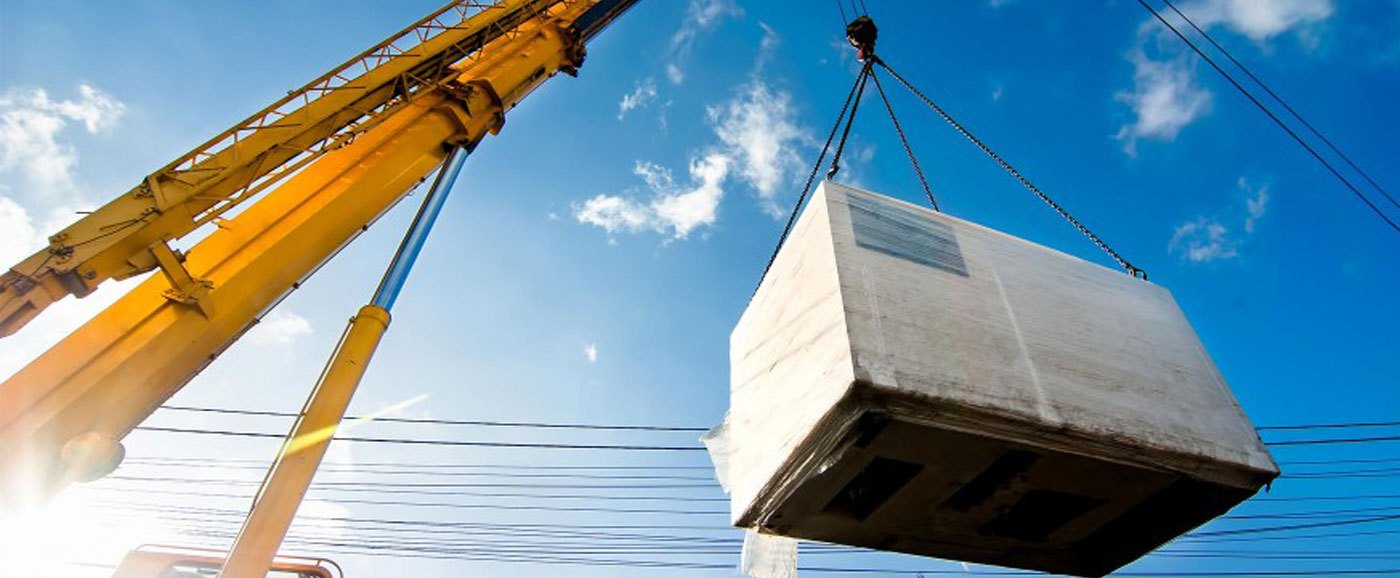
PHASE ONE CONSTRUCTION: SUPPORT MATTERS
Instead of moving the company to another location that would increase the commute for many employees, an addition to the existing building was considered the best solution.
WHEN STARTING A MAJOR CONSTRUCTION PROJECT, THERE IS EITHER A CLEAN SITE TO START WITH OR SOMETHING NEEDS TO COME DOWN. AUGER FABRICATION STARTED IN NEWTOWN SQUARE IN 1969 AND HAS RELOCATED TWICE AS A RESULT OF RAPID GROWTH WITHIN THE COMPANY. AS THE BUSINESS GREW AND 25 YEARS PASSED, AUGER FABRICATION FOUND ITSELF IN A SIMILAR PREDICAMENT. INSTEAD OF MOVING THE COMPANY TO ANOTHER LOCATION THAT WOULD INCREASE THE COMMUTE FOR MANY EMPLOYEES, AN ADDITION TO THE EXISTING BUILDING WAS CONSIDERED THE BEST SOLUTION.
After the demolition took place in June, both the outside and inside of the building looked drastically different than it did mere weeks ago. The front of the building went from mounds of rubble to a flat dirt surface waiting for the next project to take place. As the outside was waiting, the inside was barren with the exception of lifts to place support beams and to rework the rest of the duct work to the temporary offices.
In the rule of gravity, there is an equal and opposite reaction for everything. Because of this a temporary wall was built to prevent debris and the elements from entering which required support structures to handle the pressure from the supports for the addition for the first and second floors.
While the inside of the building was being prepared for the installation of the exterior support beams, so was the outside. Excavators removed dirt and rebar wire was placed, ready for the concrete to be poured in the days to come. The concrete is used to keep these beams in place. Imagine if there was a torrential downpour and the building started to sink because there was not any support for the beams. It is the same case for your house. If you do not have a basement, then you have a concrete slab that you house utilizes for support; if you do have a basement, then that acts as the support for your house as well.
Pouring and laying down the concrete was the easy part of the installation of the beams. Made out of steel these beams are no easy feat to move so with a need to move the beams, came humungous cranes to lift and move the beams into the best possible position for their intended installation. Lifting, rotating and holding the beams were what took place for several weeks. Similarly to building a log house as a child, the upright beams, which extend to the roof, were the first to be installed followed by the second floor horizontal beams.
Beams, beams, and more beams. That is the summary of structural support for any building. Once the second floor had the set amount of floor support, the roof beams were the next to be installed. Welders sat on the outermost beams as the crane lifted the roof supports and they guided them to where they needed to be placed measuring as they went along. After all of the beams were placed, the welders went to work securing the beams to each other.
Sheet metal was placed on the floor of the second level and as the roof of the building. Welded together and cut to sit the exact shape of the roof design. Shorter vertical beams were placed on the roof similarly to how the roof will more of a vertical extension as shown in the rendering of the building addition located in the bottom of the page. Framing was placed on the side of the building where the new roof intersected with the existing building.
Concrete was poured on the floor of the second level, covering the metal flooring. As the concrete was poured for the second level, stone was being placed and more rebar wire before the pouring of concrete for the atrium of the addition.
On a very rainy day in September in the late afternoon, we experienced some flooding in our building. Squeegees, brooms, and trashcans were all removed from the assembly and metal shops to help prevent the flooding from continuing. Employees left their offices and shops to help pitch in before the water started to seep into parts of the building that were in use. Engineers made some makeshift devices to collect the rain and reallocate it to the outside of the building. Completely drenched from the rain with pant legs rolled up mid-calf, All-Fill’s team had fun with making our site flood free.